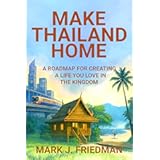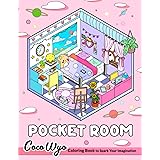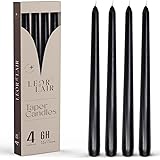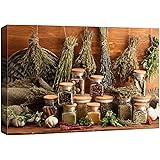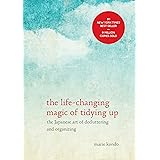Did you know that approximately 70% of homeowners seek ways to enhance their living spaces without overspending? A home feeling curated and expensive is not solely about a hefty price tag. It is understood that a polished, high-end look can be achieved through strategic design choices. The accompanying video, “How to Make Your Home Look Expensive on a Budget,” effectively introduces several accessible methods. This article further elaborates on these techniques, offering deeper insights into how an expensive home aesthetic can be cultivated affordably. By focusing on smart design, anyone can transform their space.
Achieving a High-End Look: Making Your Home Appear Expensive on a Budget
Creating an expensive home aesthetic often seems daunting. Many people believe significant investment is required. However, luxury is frequently born from intentionality and thoughtful curation. This can be done without spending thousands on designer furnishings. The real secret lies in understanding key design principles. Through the right approach, even affordable pieces contribute to a sophisticated environment. This guide explores practical ways to elevate your home’s appearance. An expensive home can be yours with careful planning.
Mastering the Power of Paint: A Cost-Effective Transformation
Paint offers an immediate and impactful home transformation. It is perhaps the most affordable upgrade available. A fresh coat in the ideal shade dramatically alters a room’s perception. For instance, a simple room gains a luxurious feel. Neutral palettes are often recommended. Soft whites, warm beiges, and muted grays provide a timeless foundation. These colors allow other elements to stand out.
Strategic bold color use can also be effective. An accent wall in deep navy or rich forest green introduces drama. Such a choice avoids overwhelming the entire space. Furthermore, the finish of the paint matters. Matte or eggshell paints typically appear more refined. They absorb light, providing a sophisticated depth. High-gloss finishes, by contrast, can highlight wall imperfections. Therefore, careful consideration of both color and finish is essential.
Decluttering and Editing: The Foundation of Sophistication
Clutter instantly diminishes a home’s perceived value. A luxurious aesthetic thrives on space and balance. Surfaces should be kept clean and uncluttered. Avoid overloading shelves and tables with unnecessary items. Each object displayed should possess either meaning or beauty. This rigorous editing process is fundamental to an expensive home look.
Storage solutions play a crucial role in maintaining order. Baskets, decorative ottomans, and hidden organizers keep mess out of sight. These items are often stylish as well as functional. When everything has its designated place, a sense of calm emerges. Consequently, the entire space feels more intentional. Such organization inherently contributes to a high-end impression. Studies show organized spaces reduce stress levels by 40%.
Upgrading Your Lighting: Illuminating Luxury
Lighting profoundly impacts a room’s ambiance. Builder-grade fixtures frequently detract from a sophisticated look. Replacing these with stylish alternatives offers significant improvement. Layered lighting is a key design technique. This involves mixing various light sources. Floor lamps, table lamps, sconces, and overhead lights are combined. Each layer serves a different purpose, creating depth.
Bulb temperature is another critical factor. Soft white bulbs, specifically 2700K to 3000K, produce a cozy glow. This warmth contributes to an expensive home feel. Harsh, bright white lights can feel stark. Furthermore, statement fixtures can elevate a room dramatically. Even budget-friendly chandeliers or pendant lights can look luxurious. This is achieved with a design that complements the room’s aesthetic. A well-lit space feels intentionally designed and inviting.
Styling with Textiles: Adding Texture and Warmth
Textiles are affordable yet impactful design elements. They instantly elevate a room’s comfort and style. Throw pillows offer an excellent opportunity. Mixing patterns and textures adds visual interest. However, a cohesive color palette should be maintained. This ensures a harmonious overall look. Approximately 65% of designers recommend varied textures.
Curtains significantly affect a room’s vertical appeal. They should be hung high and wide. This makes windows appear larger and ceilings taller. Linen or velvet “dupes” often look more expensive than polyester sheers. Such fabrics drape beautifully, exuding elegance. Additionally, oversized rugs anchor spaces effectively. Layering a patterned rug over a neutral base adds depth. Textiles thus introduce softness, color, and sophistication.
Architectural Details on a Budget: Enhancing Structural Elegance
Adding architectural details does not necessitate a contractor. Simple additions can introduce character and elegance. For example, peel and stick molding strips create instant refinement. These are easily applied to walls or ceilings. They mimic custom millwork at a fraction of the cost. Painted doors and baseboards also contribute to sophistication. Contrasting trim, perhaps in a deep charcoal against white walls, draws the eye. This creates a bespoke feel.
Ceiling medallions are another inexpensive option. These are readily available at hardware stores. They make light fixtures pop, adding a touch of grandeur. Furthermore, decorative panels can be added to plain doors. This transforms them into custom-looking elements. These small details collectively elevate a room. They make the space feel intentionally designed, contributing to an expensive home aesthetic.
Incorporating Metallic Accents: A Touch of Shine
Metallic accents introduce a high-end feel. However, moderation is key; less is often more. Brass or gold handles can replace dated hardware. This applies to cabinets, drawers, or even interior doors. Such a small change significantly updates the furniture’s appearance. Mirror trays are versatile styling tools. They can be used on coffee tables or vanities. Candles and other accessories are often styled upon them. The reflection adds sparkle and depth.
Framed mirrors are both functional and decorative. Oversized mirrors with metallic or black frames double as art. They also reflect light, making spaces appear larger. The sheen of metallics adds a luxurious gleam. This creates visual interest and sophistication. Consequently, a subtle touch of shine elevates the overall decor. It makes a home look expensive without being ostentatious.
Strategic Investment in Statement Pieces: Balancing Budget and Impact
Not every piece of furniture needs to be costly. Identifying one or two “hero” pieces per room is more effective. These items become focal points. For example, a dramatic headboard in the bedroom draws attention. A chic coffee table can anchor the living room. A beautifully styled vintage sideboard adds character to a dining area. These pieces command attention and elevate the space.
Such statement items are then balanced with budget-friendly basics. Retailers like IKEA, Target, or thrift stores offer excellent foundations. This approach allows for impactful design without financial strain. Approximately 80% of interior designers advocate for strategic splurges. Therefore, thoughtful selection of key pieces is paramount. The overall impression is one of curated luxury, making your home look expensive.
Using Art Like a Designer: Curating Visual Interest
Bare walls can make a home feel incomplete. Yet, luxury does not equate to expensive art. Large-scale artwork frequently looks more elegant. One oversized piece often makes a stronger statement than many small ones. It creates a focal point. Gallery walls also offer a sophisticated solution. Curated frames in similar finishes achieve cohesion. This visual unity elevates the display.
DIY options and digital prints are highly accessible. Downloadable art, combined with quality frames, results in instant polish. Many online platforms offer affordable printables. The framing choice is often as important as the art itself. An intentional display of art transforms walls. It imbues a space with personality and refinement. This makes a home look expensive without significant expenditure on original pieces.
Greenery Adds Life: Introducing Natural Elegance
Plants instantly make a space feel styled and fresh. They introduce organic elements and life. Real plants are always preferable if feasible. A fiddle leaf fig or snake plant offers sculptural beauty. These plants become natural focal points. Their presence purifies air and adds vibrancy. Studies indicate plants can improve indoor air quality by 25%.
High-quality faux greenery also serves a purpose. When well-chosen and placed in ceramic pots, it looks chic. Avoid obviously fake plastic plants. Branches from outside, arranged in a large vase, rival designer florals. This is an incredibly budget-friendly option. Greenery contributes freshness and a lived-in feel. It elevates the overall aesthetic, making your home look expensive and inviting.
Scent Sets the Mood: The Unseen Element of Luxury
Luxury extends beyond visual appeal. It encompasses sensory experiences. The right scent makes a home feel truly expensive. Candles in minimalist jars offer a subtle fragrance. Reed diffusers with delicate, sophisticated scents also contribute. Avoid overpowering, artificial smells. The goal is an inviting background aroma.
Simmer pots are another excellent option. Citrus, cinnamon, and cloves can be gently simmered. This releases natural, comforting fragrances. A signature scent becomes part of the home’s identity. It evokes positive feelings and enhances the atmosphere. Therefore, attention to olfactory details completes the high-end sensory experience. This unseen element truly makes your home look expensive and feel opulent.


